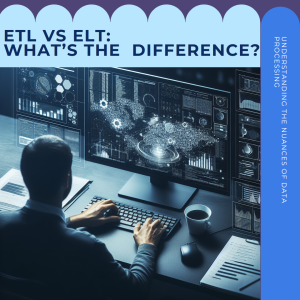Introduction
We often get asked both these questions. What is ETL? and what is ELT?
ETLs and ELTs are two data integration processes. Both are used to extract, transform, and load data from one or more sources into a target system. The target could include a database, data warehouse or data lake. ETL stands for Extract, Transform, Load, while ELT stands for Extract, Load, Transform.
E = Extract
L = Load
T = Transform
ETL vs ELT
The primary difference between ETL and ELT is the order in which the transformation step occurs. In ETL, the transformation step occurs before the data is loaded into the target system
ETL = Extract, Transform and Load
, while in ELT, the transformation step occurs after the data is loaded into the target system.
ELT = Extract, Load and Transform
ETL is well-suited for smaller target data repositories that require less frequent updating. It is a batch-oriented process that is best suited for structured data, traditionally this is used in data warehousing. ETL tools include Talend, ADF (Azure Data Factory) and SSIS (Microsoft SQL Server Integration Services).
ELT is ideal for large amounts of raw data that require real-time updates. It is a newer process and is better suited to unstructured data. Loading data into a data lake and then processes is a key example of ELT in action. The big data systems using Apache either through spark or in the form of Databricks are examples of ELT. A typical example would be the medallion architecture of importing data in as a Bronze layer and then transforming to silver and gold layers.
Conclusion
In conclusion, both ETL and ELT have their own advantages and use cases. ETL is well-suited for smaller target data repositories that require less frequent updating, while ELT is ideal for large amounts of raw data that require real-time updates.
Contact us if you want to find out more or discuss references from our clients.
Find out about our Business Intelligence Consultancy Service.
Or find other useful SQL, Power BI or other business analytics timesavers in our Blog
Our Business Analytics Timesavers are selected from our day to day analytics consultancy work. They are the everyday things we see that really help analysts, SQL developers, BI Developers and many more people. Our blog has something for everyone, from tips for improving your SQL skills to posts about BI tools and techniques. We hope that you find these helpful!
Blog Posted by David Laws



